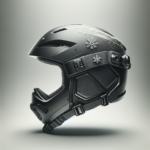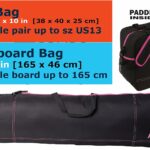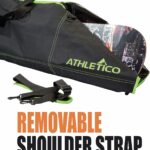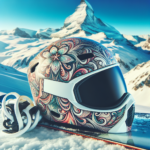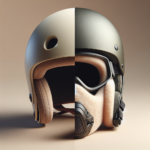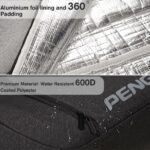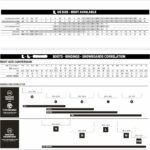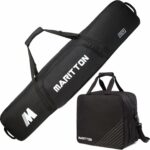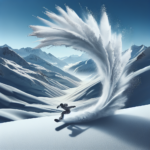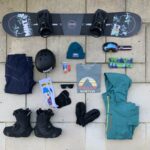Planning a snowboarding trip and need the right gear? This article is designed just for you. Equipping yourself for a day on the slopes can be challenging, particularly if you’re a beginner. It’s critical to know what to look for in snowboarding gear to stay comfortable, safe, and, of course, stylish on the snow. This piece will guide you in making informed choices from the helmet down to your boots, ensuring an unforgettable snowboarding experience.
Understanding the Basics
Snowboarding is an exhilarating sport, offering a blend of challenge, adventure and beautiful alpine surroundings. However, before you hop onto a chairlift and head for the mountain, it’s essential to understand some basic elements of the sport.
Knowing your riding style
Your snowboarding style is the first thing you need to address. It influences what kind of gear you will need and how you will use it. Snowboarding styles can be broadly classified into freestyle, freeriding, and alpine. Freestyle prioritizes tricks and jumps, freeriding is about off-piste and ungroomed runs, while alpine style focuses on speed and carve turns on groomed runs. Understand what excites you about snowboarding and consider your style before purchasing your gear.
Considering your skill level
Your riding proficiency directly affects the kind of gear you should buy. Beginners will need forgiving gear that facilitates learning, while advanced snowboarders may go for equipment that enables precise control and high performance. Be honest about your ability to make the most suitable gear choices.
Choosing the right size for your gear
The size of your snowboarding gear heavily affects your control over the board and your comfort level. For instance, snowboarding boots won’t provide adequate support if they’re too big, just as a snowboard that’s too small can limit your maneuverability. Consider factors like your weight, height, and foot size while choosing your gear.
Selecting the Right Snowboard
Knowing the different types of snowboards
There’s a multitude of snowboards available on the market, each designed to cater to a specific style of riding. Some of the common types are all-mountain boards, freestyle boards, powder boards, and carving boards. Each type has a unique combination of elements like length, width, sidecut radius, flex, and camber that determine its performance.
Choosing the right snowboard for your riding style
The “right” snowboard differs greatly depending on your chosen style. For example, if you’re into freestyle, you might go for a lighter, shorter board with twin-directional shape that facilitates tricks. Conversely, if you’re into freeriding, a longer, directional board with good flotation might serve you better.
Selecting the right size snowboard
While board length primarily depends upon your weight and style, the width depends on your boot size to eliminate any chance of toe drag. A certain element of personal preference also comes into play here. In general, a shorter board is more maneuverable and better suited to tricks, while a longer one provides stability and control at high speeds.
Choosing the Proper Snowboarding Boots
Understanding the importance of well-fitted boots
Never underestimate the importance of well-fitted snowboarding boots. They are your medium of communication with the board. Not only must they be comfortable and warm, they also need to provide adequate support and have the right flex for your style and ability.
Determining the right boot size
Your boot size might be different from your usual shoe size. The correct snowboarding boots should firmly cradle your feet, with no pressure points or loose areas. Your toes should lightly touch the front of the boots when you are standing upright, but shouldn’t curl or feel cramped.
Considering boot flexibility
Snowboarding boots range from soft to stiff in terms of flexibility. A softer boot is usually more comfortable and forgiving, ideal for beginners and freestyle riders. Stiffer boots provide better control and stability at high speeds, suitable for freeriding and carving.
Securing Comfortable and Safe Snowboarding Bindings
Learning about the different types of bindings
Bindings are a critical part of your snowboarding gear. They secure your boots to the board and transfer your movements to it. Two main types of bindings include strap-in bindings and step-in bindings.
Matching your bindings to your boots
The binding size should correspond to your boot size. They should also match in terms of flex. A soft-flexing boot on a stiff binding, or vice versa, may result in an imbalanced ride.
Considering binding adjustability
The more adjustable a binding is, the more it can be customized to your comfort and riding style. Things like strap positions, highback angle, and stance width and angles can often be adjusted on modern bindings.
Investing in Quality Snowboarding Apparel
Choosing the right jacket and pants
The right snowboarding attire can make all the difference to your day on a mountain. Choose a jacket and pants that are waterproof, breathable, and insulated. Consider ones with snow-specific features like snow skirts, helmet-compatible hoods, and lots of pockets.
Understanding the importance of moisture-wicking layers
Layering is crucial in snowboarding. Start with a moisture-wicking base layer to keep you dry, add insulating mid-layers for warmth, and finish with a waterproof, breathable outer layer for protection against weather elements.
Securing the right accessories including gloves and socks
Snowboarding socks should be warm, cushioned, and moisture-wicking. Gloves should be waterproof, insulated, and durable. Don’t forget a good quality, comfortable beanie to keep your head warm.
Purchasing Snowboarding Helmet and Safety Gear
Understanding the need for safety gear
Snowboarding, like any extreme sport, carries a risk of injury. Helmets are non-negotiable for all snowboarders. Wrist guards, padded shorts, and back protectors are further additions you might consider, particularly if you’re a beginner or planning to ride in terrain parks.
Choosing the right helmet
A proper helmet is crucial for your safety. Choose a snowboarding helmet that fits snugly, sits evenly on your head, reaches down to your eyebrows, and has enough space for your goggles.
Considering additional safety gear such as wrist guards and padded shorts
Wrist guards offer protection during a fall, particularly useful for beginners. Padded shorts cushion your tailbone during backward falls, while back protectors safeguard your spine.
Preserving Vision with Snowboarding Goggles
Choosing the right goggles
Good goggles shield your eyes from snow, wind, and UV rays, while enhancing your visibility and safety on the mountain. They come in different shapes, sizes, and lens colors to cater to various conditions and user requirements.
Considering various factors like the lens color and design
Lens color affects the amount of light your eyes receive. Dark lenses are best for bright, sunny days, while lighter ones are for cloudy or snowy conditions. The lens should also be anti-fog, UV-protected, and ideally, spherical for a wider field of view.
Keeping goggles clean and fog-free
Always clean your goggles with a soft cloth and avoid touching the inside of the lens to keep it fog-free. Use anti-fog solution if necessary.
Decoding Snowboarding Jargon
Understanding common snowboarding terms
As with most sports, snowboarding has its own set of terms and jargon. From “carving” to “powder”, or “boardslide” to “ripper,” it’s important to familiarize yourself with snowboarding vocabulary to fully comprehend instruction and get the most out of your experience.
In addition to ride-related terms, there is specific terminology related to snowboarding gear. Familiarize yourself with words like camber, rocker, flex, sidecut, and others. This will help you understand gear specifications and make an informed purchase.
There’s an extensive range of tricks, techniques, and styles in snowboarding, each with its own set of terms. Whether you’re shredding the gnar in a freeride session or landing a sick grab in freestyle, knowing the lingo can certainly elevate your snowboarding experience.
Finding Reliable Snowboarding Gear Stores
Determining your shopping budget
Before starting your shopping, decide a budget. Quality snowboarding gear can be expensive, but it’s usually worth the investment because it lasts longer and performs better.
Researching reputable stores and brands
Buy from reputable stores and opt for established brands to ensure you’re getting quality products. Online forums and reviews can help provide insights on the best places to buy gear.
Considering online shopping
Online stores often have a wider gear selection and can also offer great deals. However, remember that fitting is crucial in many snowboarding equipment, so ensure there’s a fair return policy before making a purchase.
Maintaining Your Snowboarding Gear
Proper maintenance of your gear not only prolongs its lifespan but also ensures optimal performance.
Cleaning and storing your gear properly
Always clean your gear before storage to prevent rust or damage. Dry it thoroughly and store it in a cool, dry place out of direct sunlight.
Making necessary repairs
If your gear gets damaged, repair it immediately to prevent further damage. Many parts, like binding straps or buckles, can be replaced easily.
Knowing when to replace your gear
Even well-maintained gear will eventually need to be replaced. If you notice decreased performance or visible damage, it might be time for new gear. Regularly check your gear for any signs of wear and tear.
In conclusion, acquiring the right snowboarding gear enhances your performance, ensures your comfort, and safeguards you from injury. With the right knowledge, you can make informed decisions and get the most out of your snowboarding experience. So gear up right and get ready to conquer those slopes!
- What Snowboard Bindings Should I Get? - January 23, 2024
- What Size Screws For Snowboard Bindings? - January 23, 2024
- How To Snowmobile On Water? - January 23, 2024

